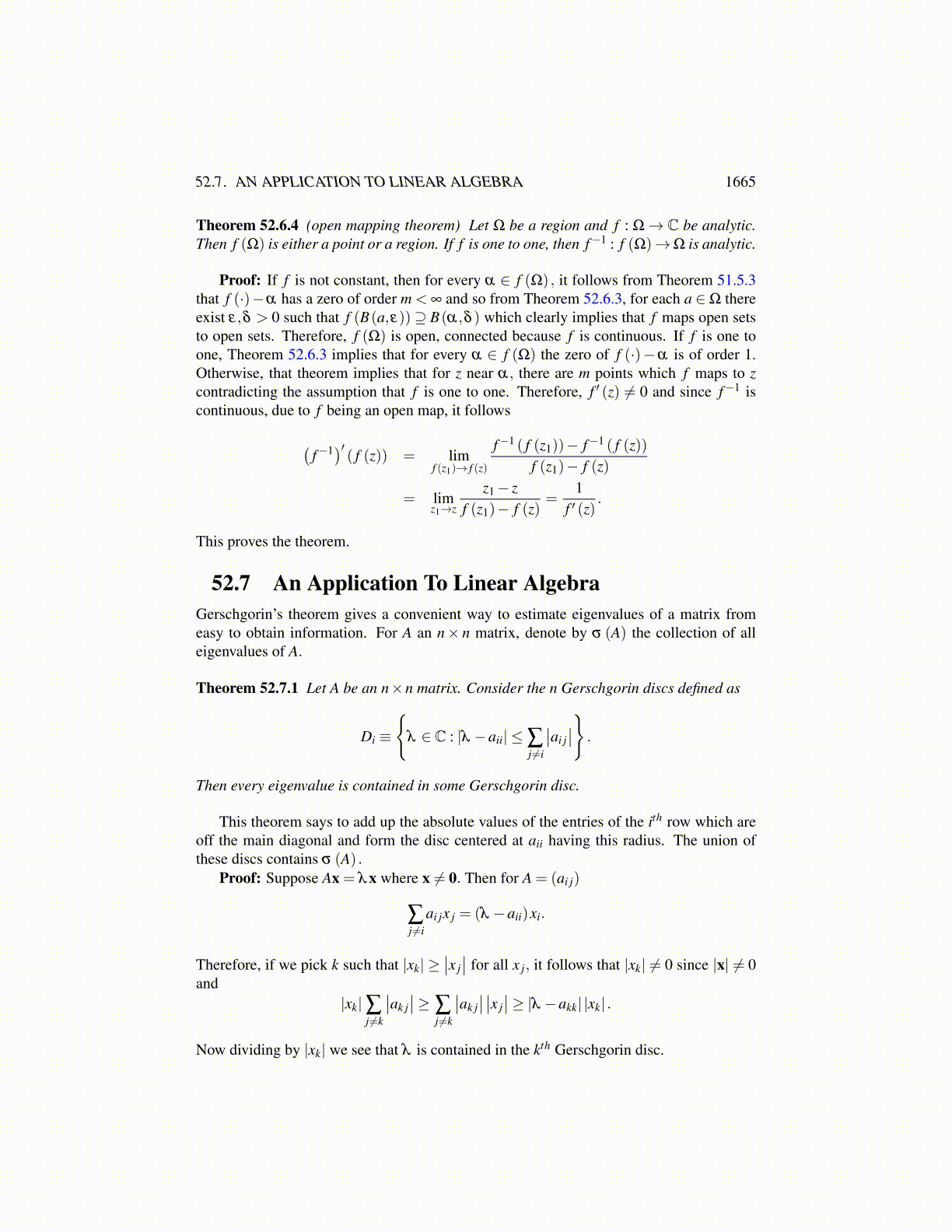
52.6. COUNTING ZEROS 1665
andn(η ,ak) = n(γ,ak) , n( f ◦ γ,α) = n( f ◦η ,α) (52.6.7)
for k = 1, · · · ,m. Thenn( f ◦ γ,α) = n( f ◦η ,α)
=1
2πi
∫f◦η
dww−α
=1
2πi
∫ b
a
f ′ (η (t))f (η (t))−α
η′ (t)dt
=1
2πi
∫η
f ′ (z)f (z)−α
dz
=m
∑k=1
n(η ,ak)
By Theorem 52.6.1. By 52.6.7, this equals ∑mk=1 n(γ,ak) which proves the theorem.
The next theorem is incredible and is very interesting for its own sake. The followingpicture is descriptive of the situation of this theorem.
f
aa1
a2
a3
a4
B(a,ε)
zα
B(α,δ )
Theorem 52.6.3 Let f : B(a,R)→ C be analytic and let
f (z)−α = (z−a)m g(z) , ∞ > m≥ 1
where g(z) ̸= 0 in B(a,R) . ( f (z)−α has a zero of order m at z = a.) Then there existε,δ > 0 with the property that for each z satisfying 0 < |z−α|< δ , there exist points,
{a1, · · · ,am} ⊆ B(a,ε) ,
such thatf−1 (z)∩B(a,ε) = {a1, · · · ,am}
and each ak is a zero of order 1 for the function f (·)− z.
Proof: By Theorem 51.5.3 f is not constant on B(a,R) because it has a zero of orderm. Therefore, using this theorem again, there exists ε > 0 such that B(a,2ε)⊆ B(a,R) andthere are no solutions to the equation f (z)−α = 0 for z ∈ B(a,2ε) except a. Also assumeε is small enough that for 0 < |z−a| ≤ 2ε, f ′ (z) ̸= 0. This can be done since otherwise, a